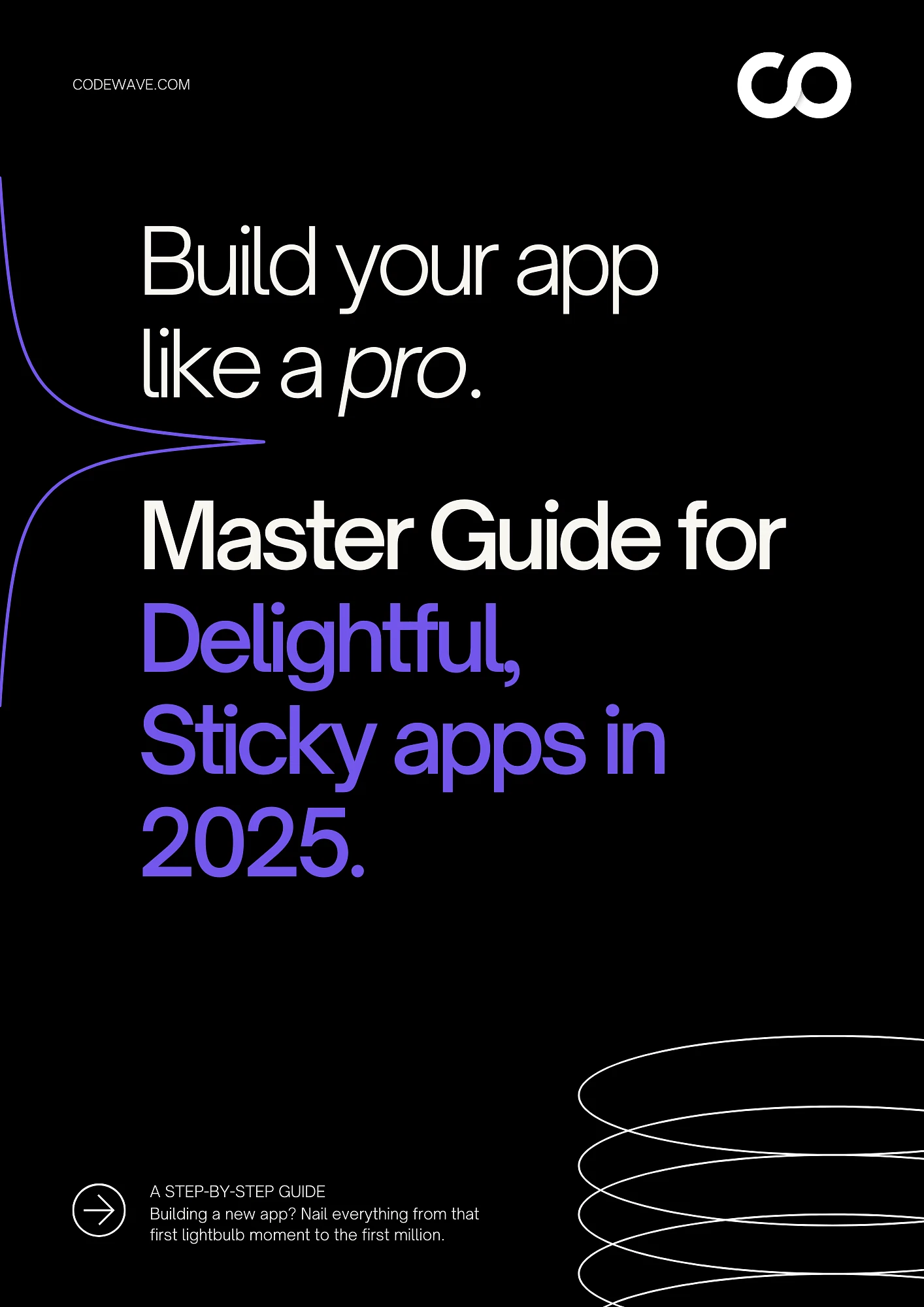Developing a product that resonates with the market is no easy feat. The pressure to meet market expectations while managing costs and team coordination often leaves many businesses scrambling.
A significant hurdle is the lack of structured planning. According to the Australian Bureau of Statistics, 23.2% of businesses reported a ‘lack of skills’ as a barrier to innovation, and 19.1% cited ‘lack of access to additional funds.
You’ve probably faced the frustrations of unclear timelines, unoptimized resources, or delayed market entries. These pain points can stall progress and increase costs, leaving your team stuck in a cycle of rework.
This blog isn’t just about theory, it’s a practical guide designed to help you cut through the confusion and simplify your product development process.
Preview of What’s Coming
- Product development is a detailed, multi-phase process that includes idea generation, prototyping, testing, and market launch.
- Best practices like collaborative approaches, agile methodology, and continuous feedback loops are critical to a product’s success.
- Avoid common pitfalls, such as neglecting market research, overcomplicating products, or ignoring post-launch support.
- Select the right tools and technologies to streamline the development process and ensure effective product delivery.
- Use technology, including automation, AI, and data analytics, to stay ahead in the competitive product development landscape.
What is Product Development?
Product development is the process of transforming an idea into a tangible product that can be sold in the market. It’s more than just creating something new. Product development includes the whole journey from generating ideas to planning and testing the product in real-world scenarios.
Here’s a simple breakdown:
- Idea Generation: This is where you brainstorm and come up with innovative solutions or products that address a specific problem or need in the market.
- Planning: After identifying an idea, you plan the resources, timeline, and necessary steps to turn that idea into a product.
- Design: This phase involves creating prototypes and refining the design to make sure the product works effectively.
- Market Validation: Before launching, testing the product with real users ensures it’s something the market needs and is willing to pay for.
In short, product development is the bridge between an idea and a successful product in the market, helping businesses turn their visions into reality.
Key Components of the Product Development Process
The product development process involves several important stages that ensure the product is well-designed, market-ready, and successful. Each component plays a unique role in transforming an idea into a marketable product.
- Conceptualization: This is the initial stage where the product idea is defined, and its purpose and target market are identified. It’s about turning an abstract idea into something concrete.
- Design: This stage focuses on designing the product and its features. This includes creating wireframes, prototypes, and refining the design based on feedback.
- Testing: After the product design is in place, it’s essential to test it. This step ensures that the product works as intended and meets the needs of the target audience through real-user feedback.
- Production: Once the product passes testing, production begins. This stage involves manufacturing the product at scale, ensuring the quality and consistency of each unit.
- Marketing: Before the product hits the market, a marketing strategy is crafted to promote it. This includes positioning, pricing, and setting up promotional campaigns to generate interest and drive sales.
- Post-launch: After the product is launched, ongoing monitoring and support ensure customer satisfaction, while collecting feedback helps improve future versions or updates.
For a deeper dive into the entire product development process, check out our full guide on How to Develop a Product: A Basic 7-Step Guide.
Understanding the product development steps helps businesses to turn ideas into successful, market-ready products that drive growth and innovation.
How Product Development Steps Help Businesses
For entrepreneurs, mastering the product development process is essential for turning an idea into a tangible product that resonates with customers. This process isn’t just a sequence of steps, it’s the backbone of business growth.
This process helps you understand the complexities of market needs, competition, and resource management. By following a structured product development process, you can avoid risks and increase the chances of bringing a successful product to market.
This approach ensures that every step, from ideation to launch, aligns with business goals and customer expectations, providing sustainable growth.
Now that we understand why product development is essential, let’s dive into the key stages that guide you from concept to successful launch.
Stages of Product Development
Bringing a product to market needs a proper understanding of each stage of the product development process. Each phase helps transform a concept into a product that meets market demands and customer needs.
Below, we break down the key stages of product development and why they matter.
1. Idea Generation
This stage is about identifying market needs, trends, or solving existing pain points. It lays the foundation for a product by addressing a problem or filling a gap in the market.
You can generate ideas through brainstorming, gathering feedback from potential customers, or observing market shifts.
Collaboration with your team and stakeholders can help spark innovative concepts.
2. Market Research and Feasibility Study
Before committing resources, understanding the market, competition, and customer base is essential. This research helps you evaluate if the product has demand and whether the market is viable for the idea.
Conduct surveys, analyze competitors, and assess the feasibility of your idea to ensure its viability. Market research will guide your decisions and help ensure you’re building something that customers truly want.
3. Concept Development
In this phase, ideas are turned into tangible concepts. You start designing the product’s features, functionality, and unique selling points (USPs). Develop mockups or wireframes to visualize how the product will work.
This helps align the concept with customer needs and ensures you’re heading in the right direction.
4. Prototyping and Testing
This phase is about building early versions of the product and testing them with real users. It allows you to identify what works, what doesn’t, and what needs improvement.
Use an iterative approach: create prototypes, get feedback, make revisions, and test again.
This ongoing cycle of testing and refining helps perfect the product before full-scale production.
5. Product Development and Production
This is the actual development and manufacturing phase, where your product takes shape and is prepared for the market.
Finalize the design, begin production, and resolve any challenges that arise. Make sure the product is ready for launch and meets the required standards for quality and performance.
6. Launch and Go-to-Market Strategy
Once the product is ready, the next step is to launch it with a clear go-to-market strategy in place. This phase sets the stage for how customers will be introduced to your product. Your goal is to create awareness and attract early adopters to drive product success.
Focus on developing a marketing plan that includes sales strategies, promotions, and customer acquisition tactics.
7. Post-Launch and Monitoring
After the product is launched, continuous monitoring and analysis are necessary to ensure its long-term success. This stage helps you improve the product based on real-world use.
Measure key performance indicators (KPIs), gather user feedback, and refine the product based on insights. Post-launch adjustments can help address unforeseen issues and make the product more appealing to a broader audience.
See how Codewave turned an EdTech platform idea into an online learning success with Zoom integration. Check out our EdTech case study.
To ensure your product development process delivers the best results, implementing the right practices is important. Let’s learn how to set your product up for success.
Best Practices for Successful Product Development
Successful product development means embedding the right practices at every stage to ensure the product checks all the customer boxes and is ready for the market. These best practices help businesses ensure that the final product delivers value.
- Clear Goals and Vision: Define the product’s purpose from the start and align the team around common goals. A shared vision ensures everyone is working towards the same end result.
- Customer-Centered Design: Focus on the user experience (UX) and address real customer pain points. Consistent user feedback and testing throughout the process keep the product relevant.
- Agile Methodology: Implement an agile process with regular iterations and quick feedback loops. This allows for flexibility and helps avoid getting stuck in lengthy development cycles.
- Cross-Functional Collaboration: Involve key team members from different departments (design, engineering, marketing) early and often. Cross-functional collaboration fosters creative solutions and ensures all perspectives are considered.
- Effective Risk Management: Identify potential risks early on, such as market changes or technical limitations, and develop mitigation plans. Regularly revisit risk management strategies as the product evolves.
- Iterative Prototyping and Testing: Create prototypes and conduct regular testing. This helps identify issues early and ensures the product meets user needs and expectations before full production.
- Continuous Learning and Improvement: Embrace a culture of learning and feedback. After launch, monitor product performance and customer feedback to continuously improve the product post-release.
To build a great product, avoiding common mistakes is just as important as following best practices.
Product Development Pitfalls to Avoid
Understanding the potential pitfalls in product development is necessary for steering a successful project. Recognizing these challenges early on helps you avoid delays, budget overruns, and missed opportunities.
- Skipping Proper Market Research: Failing to fully understand your target market can lead to wasted resources. Always conduct thorough market research to ensure there’s demand for your product.
- Ignoring User Feedback: Not incorporating user feedback can result in a product that doesn’t meet customer expectations. Keep an open line for constant feedback throughout the development process.
- Overcomplicating the Design: Trying to add too many features early on can slow down development and complicate the user experience. Focus on simplicity and user-friendliness.
- Underestimating Costs: Inadequate budgeting can leave you with an incomplete or unpolished product. Accurately estimate costs, and factor in potential unforeseen expenses.
- Delaying Launches: Postponing the launch can lead to missed opportunities. Aim to launch early with a Minimum Viable Product (MVP) to test real-world usage and iterate from there.
Technology can be the game-changer in speeding up product development. Let’s dive into how the right tools and technologies can simplify your process.
How Automation Can Speed Up Product Development
Automation tools, like CI/CD (Continuous Integration and Delivery), reduce manual intervention, automate testing, and streamline code deployment. This fastens the development cycle and shortens time-to-market.
- Serverless Architectures & Cloud Computing: Enable businesses to scale effortlessly, handle unpredictable workloads, and improve team collaboration across different locations.
- Utilizing AI and Data Analytics: Helps gather and analyze vast amounts of data quickly, while predictive analytics aids in forecasting market demands and identifying potential issues early on.
Building the right product, in the right way, is important for any business. Codewave’s design-thinking process offers extreme-value innovation through human-centric design and emerging technology.
Start Your Product Development Journey Today!
Codewave helps you turn your brilliant product ideas into tangible, market-ready solutions. We ensure that your product not only meets user needs but also exceeds expectations. We guide you through every step of the product lifecycle, from concept to prototype, and from development to launch.
Here’s why businesses trust Codewave for New Product Development:
- Retention: We design products that create long-term value for users, ensuring they continue to engage with your product over time.
- Engagement: Our design approach encourages repeat visits and interactions, fostering user loyalty and satisfaction.
- Adoption: We craft onboarding experiences that activate users quickly, reducing friction and enhancing early engagement.
- Lifetime Value: Our focus is on maximizing revenue potential by ensuring that each user journey is optimized for profitability.
- Accuracy: We implement precision engineering in every phase of the development process, ensuring your product works flawlessly.
- Performance: We design applications to handle high traffic and heavy usage, ensuring speed and reliability under all conditions.
- Privacy: We prioritize data privacy and confidentiality to safeguard your users’ information throughout the product lifecycle.
- Security: Our proactive approach to security includes automated checks that identify potential risks, ensuring your product is secure from the start.
Why Choose Codewave for New Product Development?
At Codewave, we are committed to creating high-impact products that are ready for scale. With over 300 successful projects across startups, VC firms, SMEs, and governments, we transform businesses by developing innovative, human-centric products. We are passionate about delivering products that not only meet the market demand but also ensure sustained user engagement and high retention.
By using Design Thinking and advanced tech solutions, we help you create REALAPPS, that delight users, drive engagement, and boost your bottom line.
Let’s test your idea and build the next big thing together.
Explore our portfolio and see how we’ve successfully helped other businesses bring their ideas to life!
Codewave is a UX first design thinking & digital transformation services company, designing & engineering innovative mobile apps, cloud, & edge solutions.







